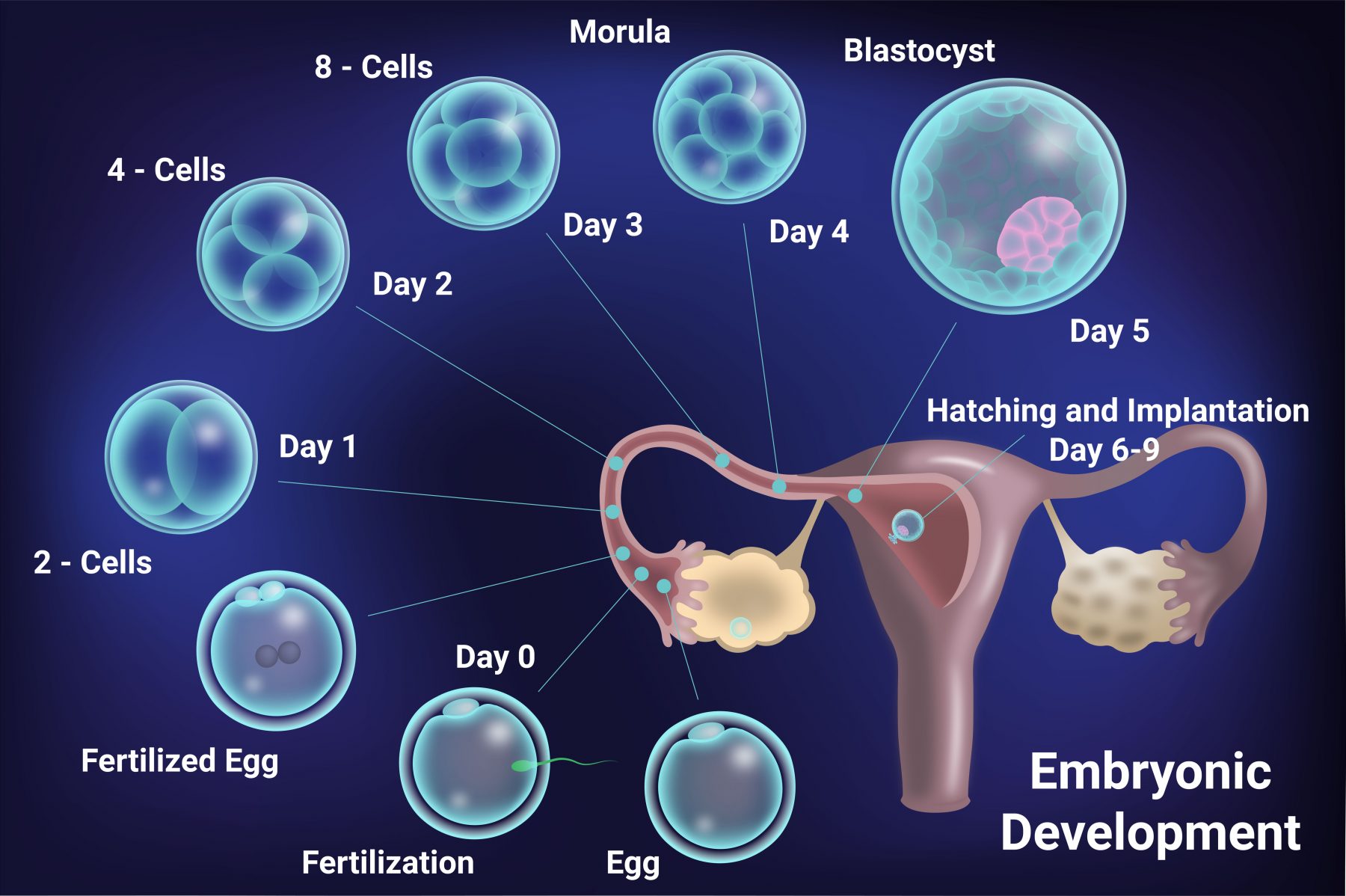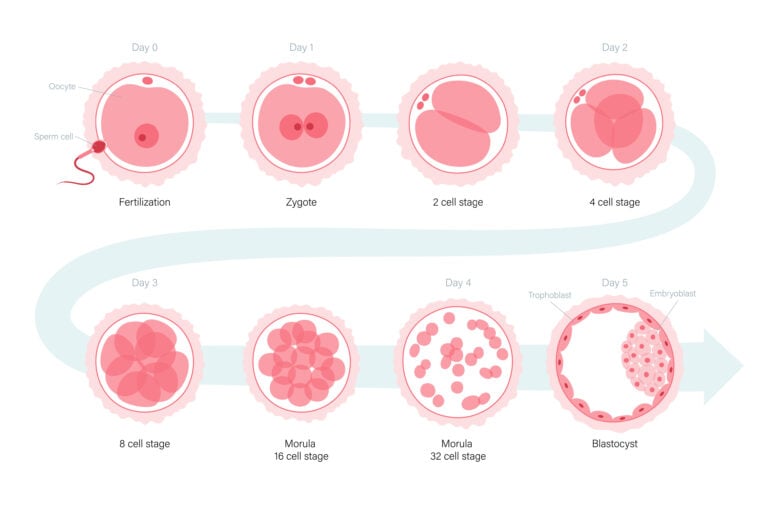
In vitro fertilization (IVF) is a medical procedure that involves fertilizing an egg outside the body and transferring the resulting embryo into the uterus. The quality of the embryo plays a critical role in determining the success of IVF, and one of the primary tools used to assess embryo quality is embryo grading. This process helps embryologists and doctors determine which embryos are most likely to result in a successful pregnancy. In this blog post, we will explore embryo grading, how it is determined, and why it is so important for IVF success.
Embryo grading is a method used to assess the quality of embryos created during an IVF cycle. It is based on visual examination and specific criteria that measure the embryo’s development and potential for successful implantation in the uterus. The embryo grading system helps IVF specialists select the best embryos for transfer. The grading system takes into account factors such as the embryo’s appearance, the number and quality of cells, and how they divide. Embryo grading is a crucial step in IVF, as it helps determine which embryos have the highest likelihood of resulting in a successful pregnancy.
Embryo grading is typically performed a few days after fertilization, usually on days 3, 5, or 6 of embryo development. On day 3, embryos are graded based on the number of cells they have, while by day 5 or 6 (blastocyst stage), embryos are graded on their structure, size, and the degree of cell differentiation. IVF embryo grading can be divided into different categories, with each category corresponding to a specific level of embryo development.
The grading process involves looking at two primary factors:
An ıvf embryo grading chart is used to assign a grade to each embryo based on these factors.
 How Does the Embryo Grading System Work?
How Does the Embryo Grading System Work?The embryo grading system involves using a numerical scale to assign grades to embryos. The grading system can vary slightly between clinics, but generally, embryos are graded using a combination of numbers and letters, such as 4AA, embryo grading 3BB, or 5AA. The first number indicates the degree of development, with higher numbers indicating more advanced stages of development. The letters correspond to the quality of the cells in the embryo.
In general, A denotes the highest quality, B denotes moderate quality (like embryo grading 4bb or embryo grading 5bb) , and C represents lower quality. The embryo grading chart helps IVF specialists determine which embryos have the best chance of successful implantation and development.
Embryo grading and success rates are closely linked. The grading system helps identify embryos that are most likely to result in a successful pregnancy. Higher-quality embryos are more likely to implant in the uterus and lead to a viable pregnancy. Grades of embryos such as embryo grading 4AA or embryo grading 5AA indicate the best embryo grading, which are associated with the highest embryo grading success rates. On the other hand, grade C embryos may have a lower chance of success.
By selecting the highest-quality embryos for transfer, IVF clinics increase the likelihood of a successful pregnancy. The better the embryo quality grading, the higher the chances that the embryo will implant and result in a healthy pregnancy.
The grading of embryos is essential because it determines which embryos have the highest likelihood of leading to a successful pregnancy. Here’s a breakdown of the different grades of embryos based on the embryo grading system:
Grade A embryos are considered the best quality embryos. These embryos have regular, evenly sized cells, and they divide in a timely and organized manner. Grade A embryos have the highest embryo grading success rates and are most likely to lead to successful pregnancies. When embryos are graded as AA, they are the top quality embryos and typically have the best chances of implantation and development.
Grade B embryos are also of good quality but may not be as perfect as Grade A embryos. These embryos may have slight irregularities in cell division or morphology but still show strong development. Grade B embryos have a decent chance of implanting and resulting in a successful pregnancy, although their success rates are somewhat lower than Grade A embryos. Grade B embryo success rates vary but remain relatively high when compared to grade C embryos.
Grade C embryos are considered lower quality. These embryos often show signs of poor cell division or fragmentation and may have fewer cells. Grade C embryo success rate is lower compared to Grade A and Grade B embryos. However, it is important to note that some Grade C embryos may still lead to pregnancy, although the chances are reduced. Clinics may opt not to transfer grade C embryos unless there are no higher-grade embryos available or if the patient is open to the possibility of using them.
While embryo grading plays a significant role in IVF success, it is not the only factor that determines the outcome. Several other factors contribute to the success of IVF treatment in Cyprus, including:
All these factors, in combination with embryo grading, help determine the likelihood of IVF success.
Several factors contribute to the overall embryo quality grading and influence the grading of embryos:
In IVF, the goal is to select the best embryo for transfer to optimize the chances of a successful pregnancy. Grade A embryos, such as those graded 4AA or 5AA, are typically the best candidates for transfer due to their higher chances of implantation and pregnancy.
Conclusion
Embryo grading is a crucial part of IVF treatment that helps doctors and embryologists assess the likelihood of success. By carefully evaluating the embryo’s appearance, division, and overall quality, healthcare professionals can select the best embryos for transfer, maximizing the chances of a successful pregnancy. While embryo grading and success rates are closely related, it is important to understand that other factors, such as maternal age and sperm quality, also play a significant role. By utilizing the embryo grading chart, clinics like the Cyprus IVF Clinic can help patients navigate the complexities of IVF and increase their chances of success.
How does embryo grading impact the success of IVF treatments?
Embryo grading helps embryologists assess the quality of embryos, guiding the selection of the most viable ones for transfer or freezing. However, it is just one factor influencing IVF success, alongside maternal age, overall health, and clinic expertise.
Is embryo grading the most important factor in IVF success?
While important, embryo grading is not the sole determinant of success. Factors such as uterine health, the skill of the IVF team, and the quality of the lab environment also play crucial roles.
Who performs embryo grading during IVF?
Highly trained embryologists, specializing in reproductive biology, perform embryo grading using a combination of visual assessments and advanced imaging tools.
What criteria are used to grade embryos?
Embryos are graded based on cell number, symmetry, degree of fragmentation (for cleavage-stage embryos), and the quality of the inner cell mass and trophectoderm (for blastocysts).
How are embryos graded in the laboratory?
Embryologists visually examine embryos under a microscope, assessing characteristics like cell uniformity, development stage, and overall structure, often following established grading systems such as Gardner’s for blastocysts.
Can embryo grading change over time?
Yes, embryos can improve or decline in quality as they develop. For example, a lower-grade embryo on day 3 may develop into a higher-grade blastocyst by day 5.
What do the letters and numbers in embryo grades mean?
Grades often combine numbers (indicating expansion or stage of development) and letters (assessing inner cell mass and trophectoderm quality). For instance, a grade 5AA blastocyst is highly developed and of excellent quality.
How is a blastocyst’s inner cell mass and trophectoderm evaluated?
The inner cell mass (which becomes the fetus) is assessed for compactness and uniformity, while the trophectoderm (which forms the placenta) is evaluated based on cell layer consistency and cohesiveness.
Does a higher embryo grade guarantee a successful pregnancy?
No, while higher-grade embryos have better chances of implantation, success is not guaranteed. Other biological and external factors also contribute to pregnancy outcomes.
Can lower-grade embryos still result in healthy pregnancies?
Yes, many healthy pregnancies and births result from transferring lower-grade embryos. Embryo grading is a predictive tool, not a definitive measure.
Can maternal age outweigh the importance of embryo grading?
Yes, maternal age significantly affects egg quality and embryo viability. Younger patients often have better success rates, even with lower-grade embryos.
Can lifestyle factors influence the quality of embryos?
Yes, factors like smoking, diet, alcohol consumption, and stress can impact egg and sperm quality, ultimately influencing embryo quality.